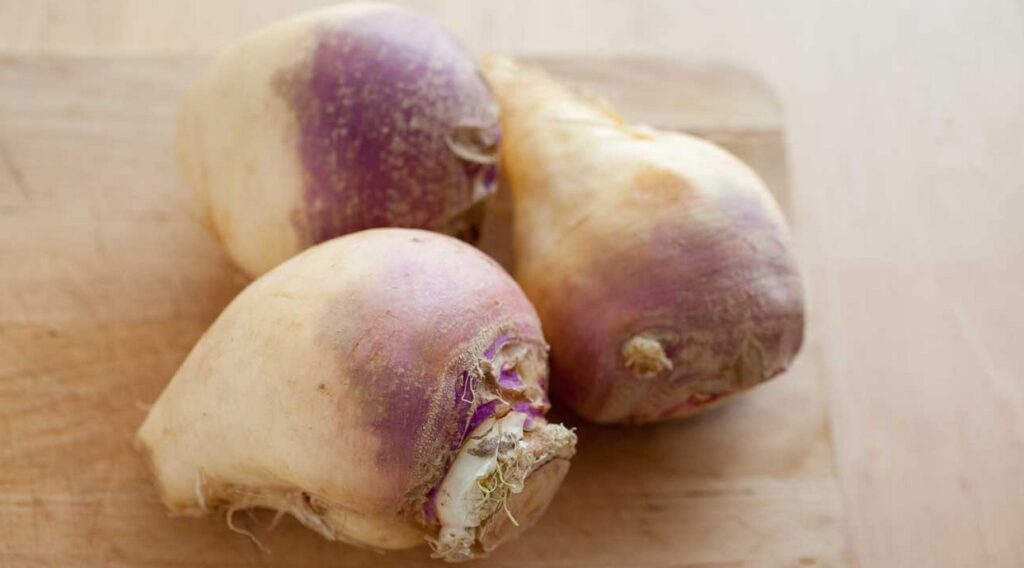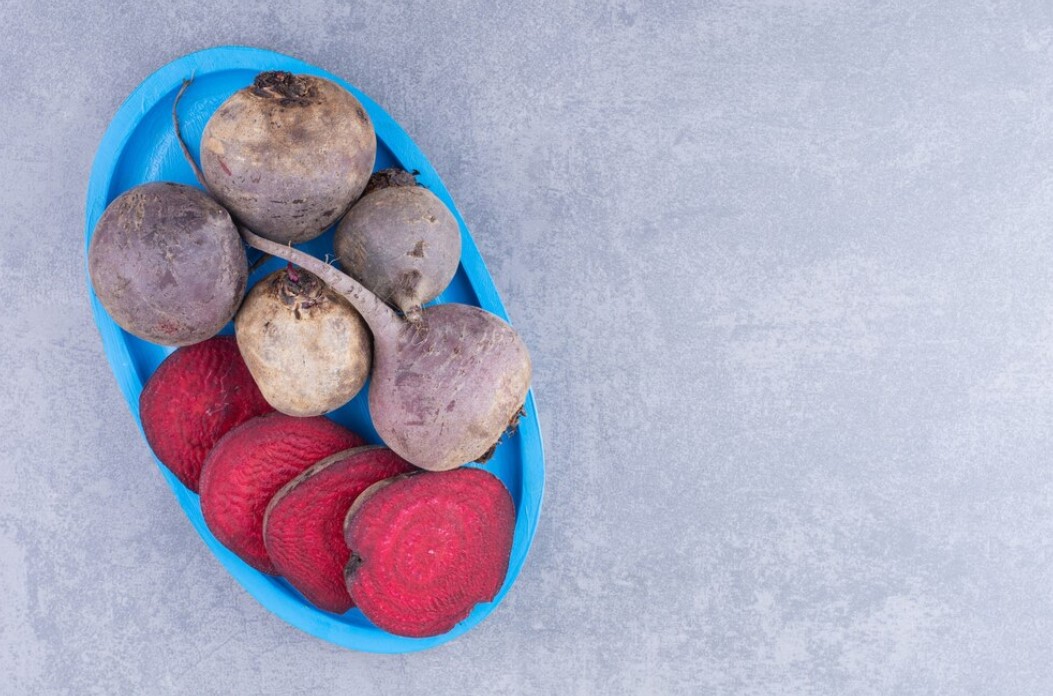Rutabaga, a root vegetable with a rich, slightly sweet flavor, is often overlooked in favor of more common vegetables. However, it is a powerhouse of nutrients, making it an excellent addition to a diabetes-friendly diet. Packed with fiber, vitamins, and minerals, rutabaga has the potential to support blood sugar regulation and offer numerous other health benefits.
The high fiber content in rutabaga plays a crucial role in stabilizing blood sugar levels by slowing the absorption of glucose, preventing spikes after meals. Additionally, rutabaga is a low-glycemic food, meaning it has a minimal impact on blood sugar, making it an ideal option for those managing diabetes. Along with its blood sugar benefits, rutabaga is rich in vitamins C and A, potassium, and magnesium, all of which contribute to overall health by boosting the immune system, improving heart health, and supporting proper metabolic function.
But is rutabaga good for diabetes? Let’s explore its benefits and practical uses. From blood sugar regulation to providing essential nutrients, rutabaga is a versatile vegetable that can be a valuable part of a balanced, diabetes-friendly diet.
Overview of Rutabaga
Rutabaga, also known as swede in some regions, is a root vegetable that belongs to the cruciferous family, closely related to turnips and cabbage. It has a round shape with purple and yellow skin and a firm, pale yellow interior. Rutabaga has a mild, slightly sweet flavor with a hint of earthiness, making it a versatile vegetable in various dishes. It can be enjoyed both raw or cooked, and when roasted, sautéed, or mashed, its natural sweetness deepens, offering a satisfying texture and flavor.
Culinarily, rutabaga can be used in a variety of ways. It can be roasted, mashed as a potato substitute, or added to soups and stews for extra texture and nutrition. Rutabaga can also be incorporated into casseroles, stir-fries, or even used to make fries. Its ability to take on different flavors makes it a great addition to both savory and slightly sweet dishes.
Nutritionally, rutabaga is a powerhouse, packed with vitamin C, which supports the immune system and promotes healthy skin. It is also rich in vitamin A, vital for vision and skin health. Rutabaga is a good source of fiber, which helps regulate digestion and blood sugar levels. Additionally, it contains essential minerals like potassium and magnesium, both of which support heart health and help maintain healthy blood pressure.
Scientific Basis for Rutabaga and Diabetes
Rutabaga is a nutrient-rich vegetable that offers potential benefits for individuals managing diabetes. Although there is limited direct research on rutabaga and its effects on blood sugar control, the general characteristics of rutabaga—such as its high fiber content, antioxidants, and low glycemic index—suggest that it can play a role in regulating blood sugar and supporting overall metabolic health.
Fiber and Glycemic Regulation
Rutabaga is an excellent source of dietary fiber, particularly soluble fiber, which has been shown to help regulate blood sugar levels. Fiber slows down the absorption of glucose in the bloodstream, which helps to prevent rapid spikes in blood sugar after meals. A high-fiber diet has been associated with improved insulin sensitivity and better blood sugar control in individuals with type 2 diabetes. The fiber in rutabaga also aids digestion and promotes a healthy gut microbiome, both of which contribute to better metabolic function. As a low-carb vegetable, rutabaga’s fiber content helps control hunger and may prevent overeating, another key factor in managing diabetes.
Antioxidants and Inflammation Reduction
Rutabaga contains several antioxidants, such as vitamin C and beta-carotene, which help reduce oxidative stress and inflammation. Chronic inflammation is a major contributor to insulin resistance, a hallmark of type 2 diabetes. By reducing oxidative stress and inflammation, rutabaga’s antioxidants may support better insulin function and overall blood sugar regulation. Research has shown that antioxidants, especially those found in vegetables like rutabaga, can help reduce the risk of complications associated with diabetes, such as cardiovascular disease and nerve damage.
Low Glycemic Index and Nutrient Density
Rutabaga has a low glycemic index (GI), which means it has a minimal impact on blood sugar levels when consumed. Low-GI foods are digested more slowly, allowing glucose to be released gradually into the bloodstream, helping maintain stable blood sugar levels. This makes rutabaga a beneficial food for individuals with diabetes who need to control post-meal glucose spikes. In addition to its low GI, rutabaga is nutrient-dense, meaning it provides a wide range of essential vitamins and minerals, including vitamin A, vitamin C, potassium, and magnesium, without being high in calories or carbohydrates.
Limitations and Need for Further Research
While rutabaga’s fiber, antioxidants, and low glycemic index suggest it may be beneficial for diabetes management, there is a lack of specific clinical studies directly linking rutabaga to improved blood sugar control. Most of the existing evidence comes from research on general vegetable consumption, fiber intake, and the role of antioxidants in blood sugar regulation. More focused studies on rutabaga would be helpful to fully understand its specific effects on diabetes and blood sugar regulation.
In conclusion, rutabaga’s high fiber content, low glycemic index, and antioxidant properties make it a valuable food for people managing diabetes. While research on rutabaga specifically is limited, its general nutritional profile aligns with what is known to support blood sugar control, making it an excellent addition to a diabetes-friendly diet. However, further studies are needed to better understand its specific role in diabetes management.

Benefits of Rutabaga for Diabetes
Rutabaga is a highly nutritious, low-calorie vegetable that offers several benefits for individuals managing diabetes. Its rich fiber content, ability to support weight management, and potential to reduce complications like inflammation and cardiovascular disease make it a valuable addition to a diabetes-friendly diet.
Stabilizes Blood Sugar Levels
One of the key benefits of rutabaga for diabetes is its high fiber content, which plays a crucial role in stabilizing blood sugar levels. The fiber in rutabaga slows down the digestion and absorption of carbohydrates, helping to regulate the release of glucose into the bloodstream. This gradual release of glucose prevents rapid spikes in blood sugar, making rutabaga an excellent choice for maintaining steady blood sugar levels. Additionally, fiber improves insulin sensitivity, helping the body process glucose more efficiently and reducing the risk of insulin resistance.
Supports Weight Management
Weight management is an essential aspect of diabetes control, particularly for individuals with type 2 diabetes. Rutabaga is a low-calorie vegetable that is high in fiber, making it a filling, nutrient-dense food that can help control hunger and prevent overeating. By promoting satiety, rutabaga aids in portion control, which is key for weight management. Maintaining a healthy weight helps reduce insulin resistance and improves blood sugar regulation, making rutabaga a great food choice for supporting diabetes control.
Reduces Inflammation and Cardiovascular Risks
Chronic inflammation is a common concern for individuals with diabetes, often leading to complications like heart disease and nerve damage. Rutabaga is rich in antioxidants, including vitamin C and beta-carotene, which help combat oxidative stress and reduce inflammation in the body. By lowering inflammation, rutabaga may help reduce the risk of diabetes-related complications, such as cardiovascular disease. Additionally, its potassium content helps regulate blood pressure, supporting overall heart health.
Incorporating rutabaga into your diet can help stabilize blood sugar, support weight management, and reduce the risk of inflammation and cardiovascular complications, all of which are essential for managing diabetes effectively.
How to Use Rutabaga in a Diabetes-Friendly Diet
Rutabaga is a versatile, low-carb vegetable that can easily be incorporated into a diabetes-friendly diet. Its mild, slightly sweet flavor and hearty texture make it an excellent substitute for higher-carb vegetables, while its high fiber content and nutrient density support blood sugar regulation. Here are some practical tips for including rutabaga in your meals:
Use Rutabaga in Soups, Stews, or Mash
Rutabaga can be used in soups or stews as a low-carb alternative to potatoes or other starchy vegetables. Simply chop it into cubes and add it to your favorite vegetable or chicken soup for a nutritious boost. Rutabaga also works well as a mashed potato substitute. Boil or steam rutabaga, then mash it with a little olive oil, garlic, and herbs for a delicious, low-carb side dish.
Roast Rutabaga as a Savory Side Dish
Roasting rutabaga brings out its natural sweetness and enhances its flavor. Cut it into cubes, toss with olive oil, salt, and pepper, and roast at 400°F until tender and golden. It makes a perfect savory side dish that pairs well with lean proteins like chicken, turkey, or fish.
Incorporate Rutabaga into Low-Carb Casseroles or Stir-Fries
Rutabaga can be added to casseroles or stir-fries for an extra layer of flavor and nutrition. It combines well with other low-carb vegetables like zucchini, bell peppers, and spinach, making it a great choice for vegetable medleys.
Portion Control and Balance
While rutabaga is low in calories and carbohydrates, it’s important to practice portion control. A 1/2 cup serving of cooked rutabaga is an ideal portion. Pair it with lean proteins and healthy fats to create balanced, blood sugar-friendly meals.
By incorporating rutabaga into your meals, you can enjoy its nutritional benefits while maintaining stable blood sugar levels and supporting your diabetes management.
FAQs
Is rutabaga safe for people with diabetes?
Yes, rutabaga is safe for people with diabetes. It is a low-carb vegetable that provides essential nutrients without causing significant spikes in blood sugar levels. Its high fiber content helps regulate glucose absorption, making it a good choice for maintaining steady blood sugar levels. As part of a balanced diet, rutabaga can be a beneficial addition to diabetes management.
Do rutabaga have a low glycemic index?
Yes, rutabaga has a low glycemic index (GI), which means it has a minimal effect on blood sugar levels. Foods with a low GI are digested more slowly, leading to gradual glucose release into the bloodstream. This is especially beneficial for individuals with diabetes, as it helps maintain stable blood sugar levels and reduces the risk of rapid glucose spikes after meals.
How much rutabaga should one consume daily?
A recommended serving of rutabaga is about 1/2 to 1 cup of cooked rutabaga per meal. This provides a healthy amount of fiber and nutrients while keeping carbohydrate intake low. Adjust portions based on individual dietary needs, but always aim for balance by pairing rutabaga with lean proteins and healthy fats.
Are there any side effects of eating rutabaga in excess?
Rutabaga is generally safe for most people, but eating it in excessive amounts may cause mild digestive discomfort, such as bloating or gas, due to its fiber content. Additionally, rutabaga contains oxalates, which, in very large quantities, could contribute to kidney stone formation in susceptible individuals. Moderation is key to avoid any adverse effects.
Conclusion
Rutabaga is a nutrient-dense, low-carb vegetable that offers numerous benefits for individuals managing diabetes. Its high fiber content helps regulate blood sugar by slowing glucose absorption, preventing rapid spikes after meals. The low glycemic index of rutabaga makes it an excellent choice for maintaining steady blood sugar levels throughout the day. Additionally, rutabaga is rich in essential vitamins and minerals, including vitamin C, vitamin A, and magnesium, all of which support overall health and help reduce inflammation—an important consideration for individuals with diabetes.
Incorporating rutabaga into your meals not only enhances your diet with a variety of nutrients but also helps you maintain stable blood sugar levels and manage your weight. However, as with any dietary change, it’s important to consult with a healthcare provider to ensure that rutabaga and other vegetables fit well within your personalized diabetes management plan.
Exploring diabetes-friendly vegetables like rutabaga is a delicious way to support your health. With its versatility and rich nutritional profile, rutabaga can be easily added to your meals to promote better blood sugar control and overall well-being.
